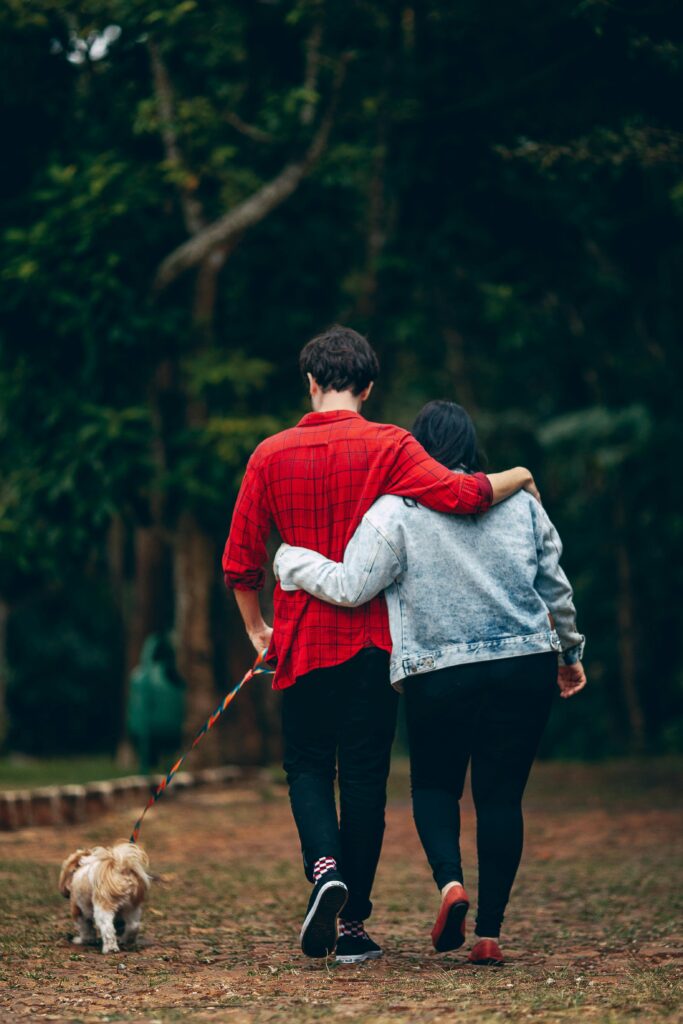Every November, we pause to reflect on what we’re grateful for. As trainers, our list always begins with dogs. They teach us patience, consistency, and gratitude. But they also remind us of something even more powerful: that training is not just about obedience, it’s about building trust and connection.
When you look at training as a way to strengthen that bond, it becomes something deeper. Every command, walk, or quiet moment of focus reinforces mutual understanding. In this blog, we’ll explore the lessons dogs teach us through training and how those lessons can transform your relationship with your four-legged friend.
The Gift of Patience
Dogs don’t learn overnight, and that’s okay. Training is a process built on repetition and positive reinforcement. Each session teaches us to slow down, breathe, and celebrate progress instead of perfection.
If you’ve ever struggled with impatience during training, remember that your energy directly affects your dog. Calm, steady leadership builds confidence far faster than frustration. Our post on how to break bad habits in dogs without confusion or conflict shares effective ways to stay patient while correcting behaviors.
The Power of Consistency
Dogs thrive when expectations are clear. Whether it’s maintaining leash manners, greeting guests politely, or following the “place” command, consistency makes training easier for everyone. When your tone, body language, and timing stay steady, your dog learns faster and trusts your direction.
Inconsistent training sends mixed signals and can confuse your dog. Make sure every member of the household follows the same rules. The more predictable you are, the more reliable your dog becomes.
Gratitude for Structure and Routine
Training isn’t just about control, it’s about security. Dogs find comfort in structure because it helps them understand what’s expected. Daily training sessions, consistent feeding times, and regular walks provide mental stability.
One of the best tools for reinforcing structure is the place command, which gives dogs a calm spot to retreat to during excitement or stress. You can learn how to teach this command effectively from our blog on how to train a reliable place command for summer guests and chaos.
Checklist: Simple Ways to Practice Gratitude With Your Dog
Want to make your dog feel valued while strengthening your bond? Here’s a simple checklist of gratitude-based habits to start today:
- Set aside five minutes daily for focused training time
- Praise effort, not just perfection
- Go on calm, structured walks instead of rushed outings
- Give your dog a “job” such as holding place during meals or greetings
- Celebrate quiet moments together without distraction
- Keep training sessions upbeat and end on success
Small, intentional actions show your dog they’re part of your team, not just a pet.
Why Training Builds a Lifelong Connection
Training helps bridge the communication gap between humans and dogs. It turns confusion into clarity and chaos into calm. When your dog learns to trust you, they also learn to trust the world around them. This mutual confidence makes every shared experience, from walks to family gatherings, more enjoyable.
Our Basic & Advanced Obedience Program helps owners develop that connection through structure, leadership, and clear communication.
Explore our Basic & Advanced Obedience Program
Expert Resource: Training With Rewards
The AKC’s guide to training with rewards explains how positive reinforcement motivates dogs and builds lasting trust. Reward-based systems are the foundation for gratitude-driven training.
FAQ: Grateful for Dogs and Training Lessons
Q: How often should I train my dog to keep them happy and engaged?
A: Short, consistent sessions (around 5 to 10 minutes a few times per day) are best for most dogs.
Q: What’s the best way to show gratitude to my dog during training?
A: Praise, calm affection, and high-value treats all communicate appreciation. Dogs love clear feedback.
Q: Can older dogs still benefit from training?
A: Absolutely. Dogs of any age can learn new habits and skills with the right structure and patience.
Q: How do I stay consistent when life gets busy?
A: Build training into your routine. Ask for obedience before meals, walks, and play sessions, it becomes second nature over time.
Q: What should I do if my dog seems frustrated or bored during training?
A: Switch up the exercises. Keep sessions short and positive to maintain engagement.
Final Thoughts
Training is more than commands, it’s an act of gratitude. Every time you teach your dog, you invest in trust, safety, and companionship. Whether your dog is a goofy puppy or a wise senior, consistency and calm leadership will always strengthen your bond.
This November, take a moment to thank your dog for the lessons they’ve taught you: patience, focus, and unconditional love. Then, return the favor by continuing to guide them with kindness and structure.
Contact Off Leash K9 Training Dayton today to discover how gratitude and obedience can go hand in hand.


